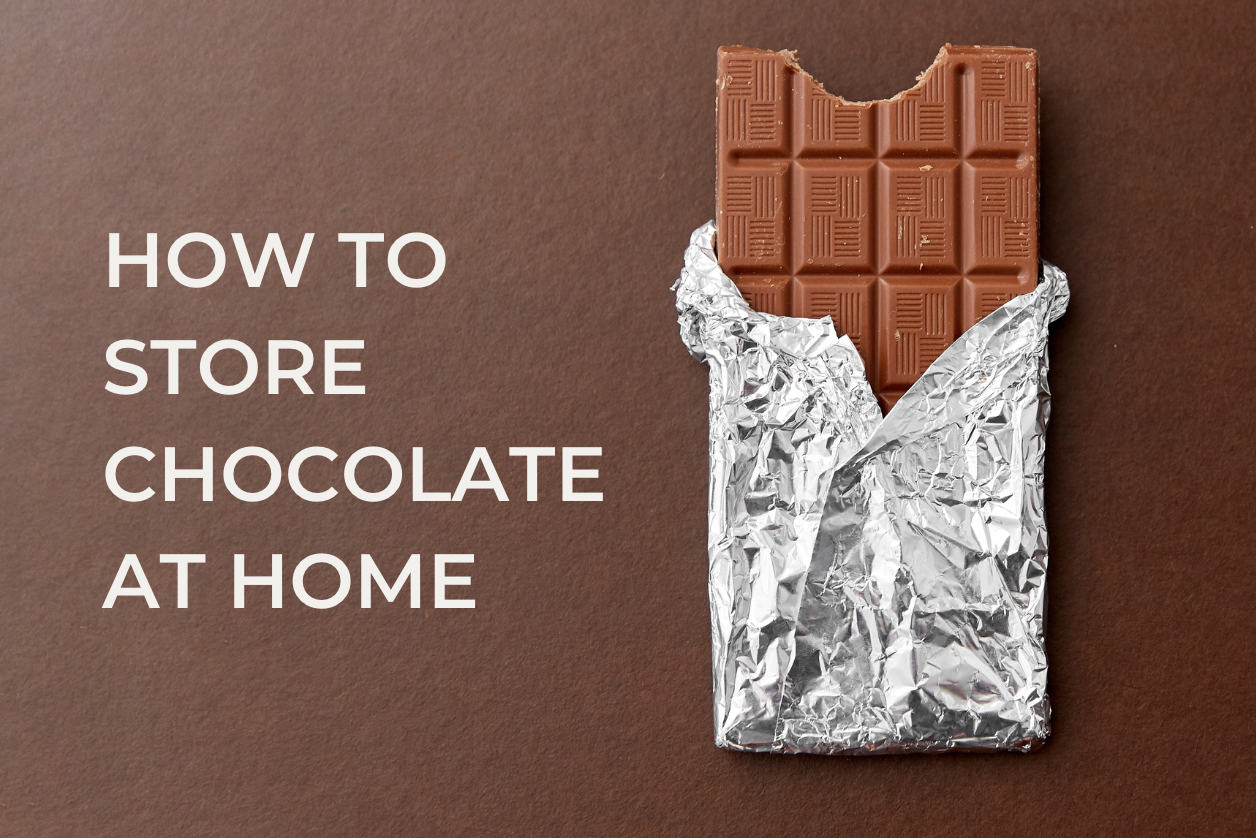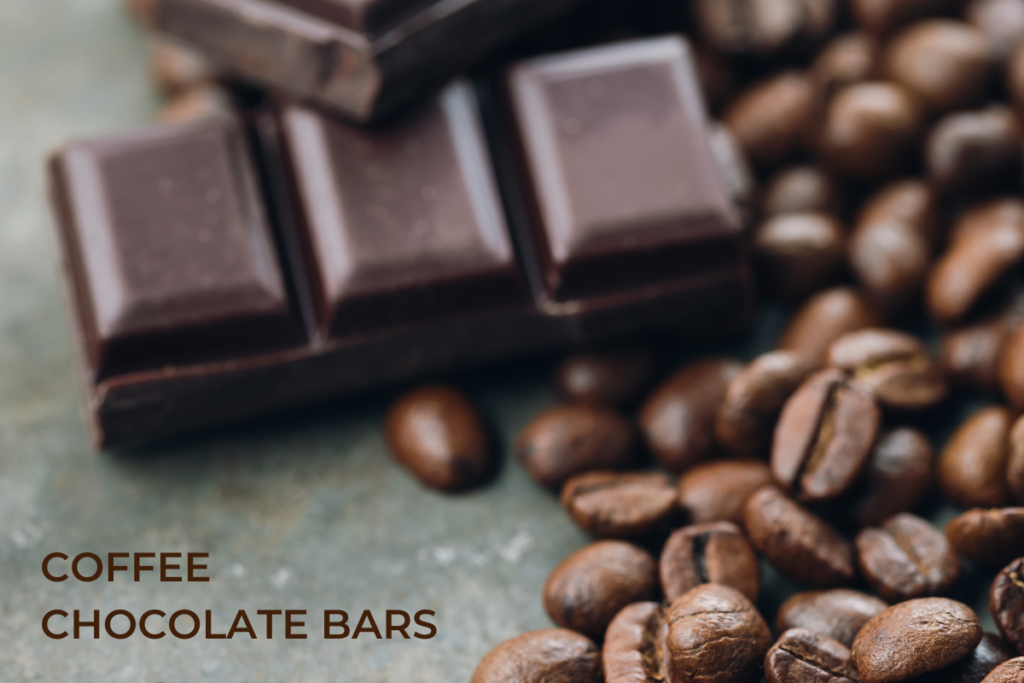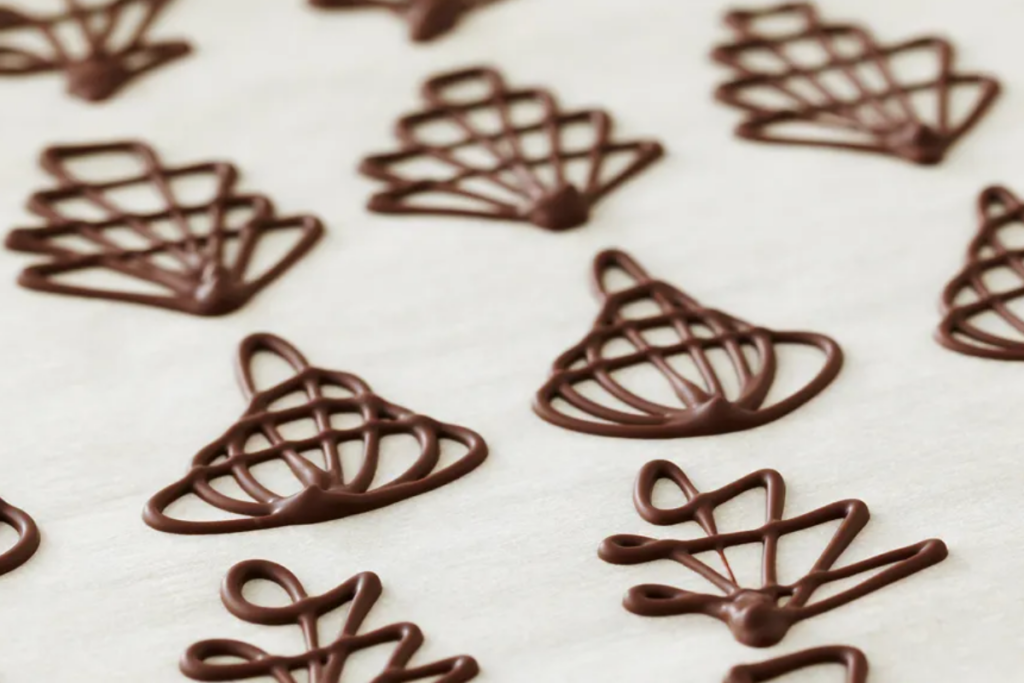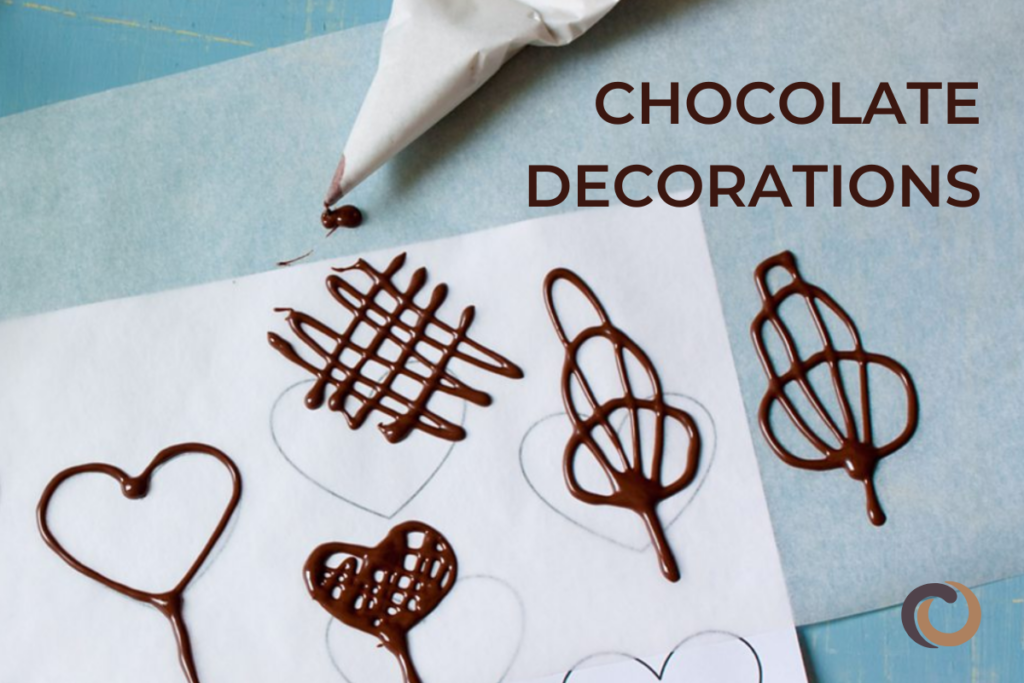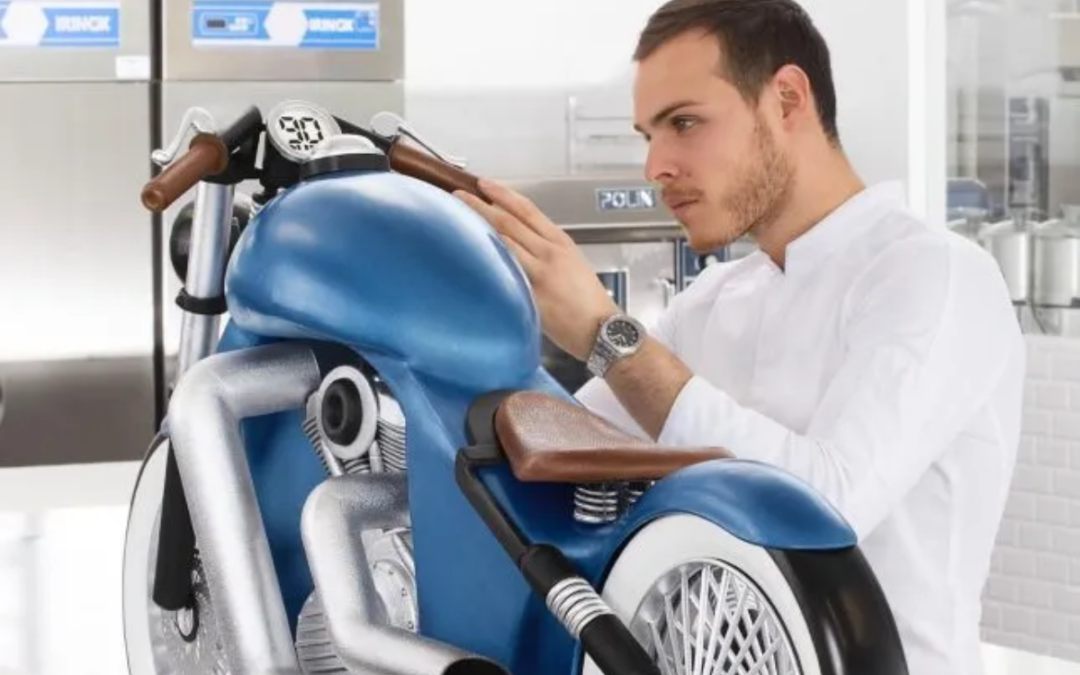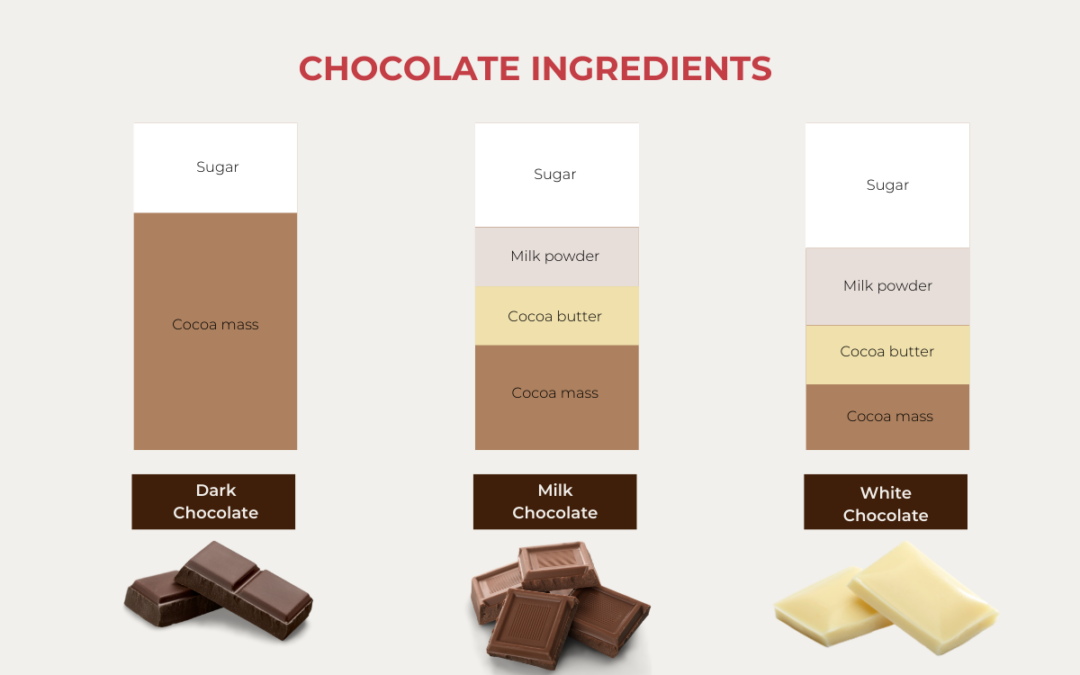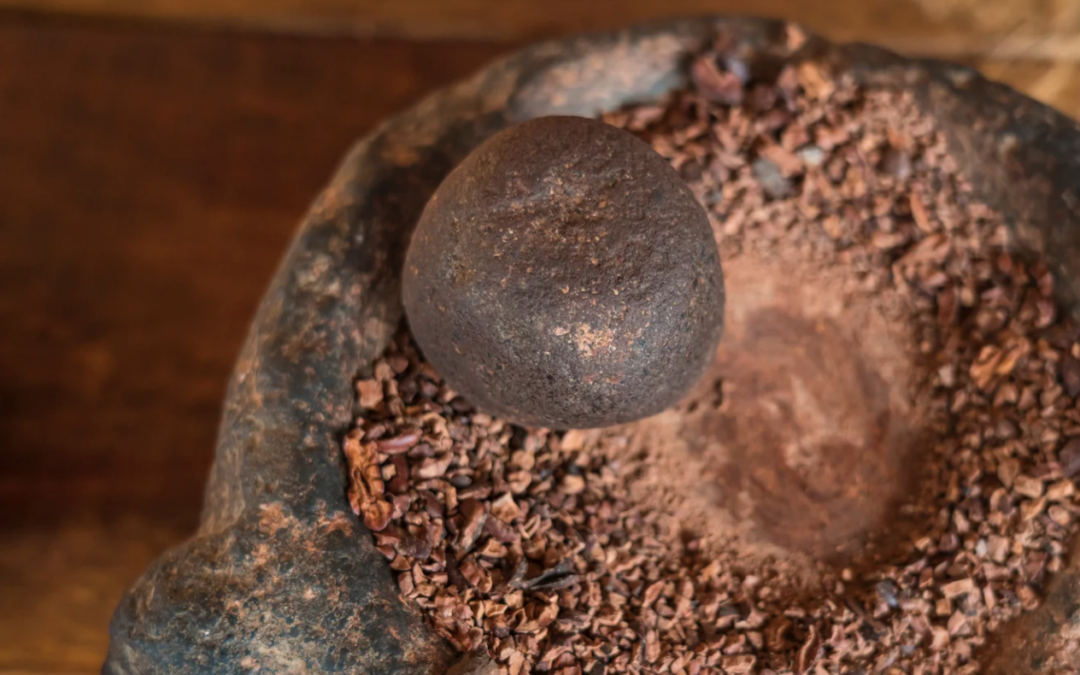If you’re like us, there’s never a bad time for chocolate—whether it’s a quick bite or as part of a dessert. But as much as we love it, chocolate can be a little finicky when it comes to storage. If you’ve ever found a bar that’s gone soft, dull, or bloomed with white spots and tastes a little off, you know the frustration.
The good news? With just a few simple steps, you can keep your chocolate tasting as fresh and delicious as the day you bought it. Let’s talk about how to store chocolate at home so that the last square is just as satisfying as the first.
Importance of maintaining proper chocolate conditions
Maintaining proper storage conditions is essential for preserving your chocolate’s taste, texture, and quality. High-quality chocolate is a delicate blend of cocoa, sugar, and fat, and improper storage can cause it to lose its smooth texture, rich flavor, and signature snap. Heat, moisture, or strong odors can lead to off-flavors, while poor storage conditions can make chocolate soft, chalky, or even grainy. Proper storage also prevents “bloom”—a harmless but unappealing white coating from fat or sugar. For premium chocolates, correct storage ensures each bite is as satisfying as intended, delivering the full flavor and experience.
Introduction to storing chocolate at home
Storing chocolate at home might seem straightforward, but there’s more to it than simply placing it in a pantry or fridge. Chocolate, especially high-quality chocolate, is sensitive to temperature, humidity, and odors, which can alter its flavor and texture. Proper storage preserves its rich taste, smooth texture, and appealing appearance, ensuring every bite is as delightful as intended.
Let’s also make an important distinction between chocolate and chocolate confections. Chocolate usually comes in bar form and might be infused with herbs, spices and nuts, while chocolate confections are usually round or rectangular and filled with ganache, nuts, caramels and fruit creams (often called parlines, truffles or bonbons). These chocolate confections have a much shorter shelf life and they are not typically intended to be stored for long periods of time (so eat them up!). We’ll be focusing on storing your chocolate bars in this particular blog post.
Common mistakes when storing chocolate
- Refrigeration: Refrigerating chocolate might seem helpful, but when taken out of the fridge, it can condense water on its surface, causing a dull look or “sugar bloom” on the surface. Cold temperatures can also change the chocolate’s texture and flavor if it isn’t allowed to come to room temperature prior to eating it.
- Exposure to Heat or Sunlight: While it’s nice to keep a chocolate bar on the counter to show off your recent purchase, sunlight shining through a window can ruin your chocolate. Also, storing chocolate in warm areas can make the chocolate soften or melt, losing its smooth texture and snap. Heat causes “fat bloom,” where cocoa fat rises to the surface of the chocolate and leaves white streaks or dots.
- Storing Near Strong Odors: Chocolate absorbs odors easily, so storing it near spices or scented foods can give it an unpleasant taste. This is another reason why it’s not a good idea to store chocolate in a refrigerator full of other foods.
- Keeping It Unwrapped: Keep your chocolate tightly wrapped in its original packaging or in an airtight container will help to preserve it. A good wrap will protect your chocolate from light, heat and odors.
- Storing in High Humidity: Moisture can make chocolate sticky or cause sugar bloom. Store it in a dry place, away from damp spots like the fridge or near the sink.
Optimal storage conditions for chocolate
The best way to store chocolate is in a cool, dry place with a steady temperature between 60-70°F (16-21°C) and low humidity below 50%. Keep it away from sunlight, strong smells, and locations with temperature fluctuations. Use an airtight container if possible to keep it fresh and protect it from moisture and odors.
Ideal storage locations in your home
Ideal storage locations for chocolate in your home include a pantry, cupboard, larder or any cool, dark area away from heat and sunlight. Avoid storing chocolate near the stove, windows, or fridge, as these spots can have temperature changes and humidity that affect quality. Avoid small rooms with HVAC air ducts as hot and cold air can cause rapid temperature fluctuations. A closed drawer or cabinet in a cool room is usually best for keeping chocolate fresh and flavorful.
Best practices for storing different types of chocolate
Dark Chocolate: Dark chocolate is the most stable and can last up to a year if stored in a cool, dry place at 60-70°F (16-21°C).
Milk Chocolate: Milk chocolate is more sensitive to heat and humidity because of its milk content. Store it at 60-65°F (16-18°C) in a cool, dry place, away from sunlight. Eat it within 6-8 months.
White Chocolate: White chocolate is delicate because it contains cocoa butter and no cocoa solids. It absorbs flavors and melts easily, so store it in an airtight container at 60-65°F (16-18°C) in a dark place and eat it within 4-6 months.
Filled Chocolates: Chocolates with fillings are best enjoyed within a few weeks or months. They lose freshness quickly, so store them tightly sealed in a cool, dry place and only refrigerate if needed.
Packaging tips to maintain chocolate freshness
To keep chocolate fresh, store it in an airtight container or resealable bag to protect it from air, moisture, and odors. If possible, leave it in its original packaging (as long as it can be resealed), which is designed to maintain freshness. If the original wrapper is unavailable or torn apart, wrap the chocolate tightly in wax paper, foil, or plastic wrap to shield it from air and light. Avoid thin plastic bags, as they can trap moisture—opt for thicker, sealed containers instead. For long-term storage, label and date the package to track freshness. Proper packaging preserves the chocolate’s texture, flavor, and quality.
Refrigeration vs. Room Temperature Storage
Room temperature is usually a fine way to store chocolate, ideally between 60-70°F (16-21°C). If you live in a hot climate without consistent air conditioning, it may be necessary to store your chocolate in a refrigerator. This helps maintain its texture, flavor, and appearance in an otherwise hot climate. While refrigeration can cause sugar bloom if the chocolate is taken from the fridge to a warm room, refrigeration may be necessary to prevent melting. If you refrigerate chocolate, wrap it tightly in airtight packaging to protect it from moisture and odors. Allow the chocolate to return to room temperature before eating to avoid condensation.
A dedicated chocolate fridge?
For those who are serious about their chocolate, a small, dedicated chocolate fridge is not a bad idea. The fridge can be set to the ideal chocolate storage temperature which is usually too warm for a standard fridge temperature needed to avoid food spoilage. A small dorm fridge works well or for an even smaller footprint, a makeup fridge can be used. A dedicated fridge will also ensure that there are no odors from other foods that affect your chocolate’s flavor.
Can you freeze chocolate?
Freezing chocolate is not recommended, as it can affect its texture and cause condensation when taken out of the freezer, leading to sugar bloom. However, if you need to freeze it for extra long storage, follow these steps to minimize damage:
- Wrap it tightly: Ensure the chocolate is wrapped securely in an airtight container or heavy-duty plastic wrap to prevent moisture from entering
- Freeze in small portions: If possible, freeze chocolate in smaller portions, so you only thaw what you need.
- Thaw slowly: To avoid condensation, thaw the chocolate in the refrigerator first, then bring it to room temperature before unwrapping.
Freezing chocolate should only be a last resort if you’re trying to preserve it for a long period; it’s always best to store it at room temperature when possible.
How long does chocolate last when stored properly?
When stored properly, chocolate can last quite a while:
- Dark chocolate: Up to 1 year, as long as it’s kept in a cool, dry place in airtight packaging.
- Milk chocolate: About 6-8 months, since its higher milk content makes it more sensitive to heat and humidity.
- White chocolate: 4-6 months, due to its delicate nature and lack of cocoa solids.
- Filled or flavored chocolates: Best used within a few weeks to a few months, as they tend to lose freshness faster.
Proper storage helps preserve chocolate’s flavor, texture, and quality over time.
What are signs that chocolate has gone bad?
There are a few signs that chocolate has gone bad. White streaks or spots, known as bloom, appear when cocoa butter or sugar rises to the surface due to temperature changes. This affects its look and texture but isn’t harmful. If chocolate smells sour, rancid, or like chemicals, it has absorbed unwanted odors and is no longer good. A dry, chalky, or grainy texture may mean it absorbed moisture or was stored improperly. Discoloration can happen if it’s been exposed to light or air for too long. Finally, if chocolate has melted and re-solidified, it may become soft, sticky, or lose its smooth texture. These signs suggest the chocolate has lost its temper and may not taste good, but it’s usually still safe to eat. Proper storage can help prevent these problems. Learn more about when chocolate is not safe to eat.
For more great articles and recipes, check out the rest of our CocoTerra blog.
If you have any questions or comments, feel free to contact us through our social media channels. We are @cocoterra_co on Instagram and Pinterest and @cocoterraco on X (aka Twitter) and Facebook.

